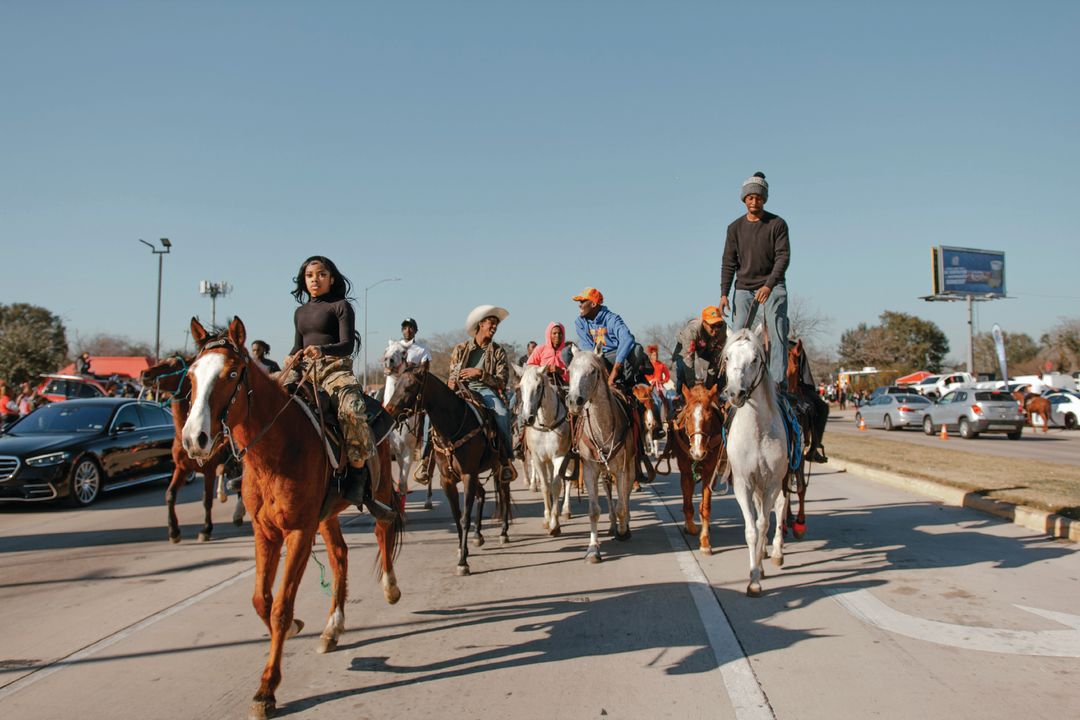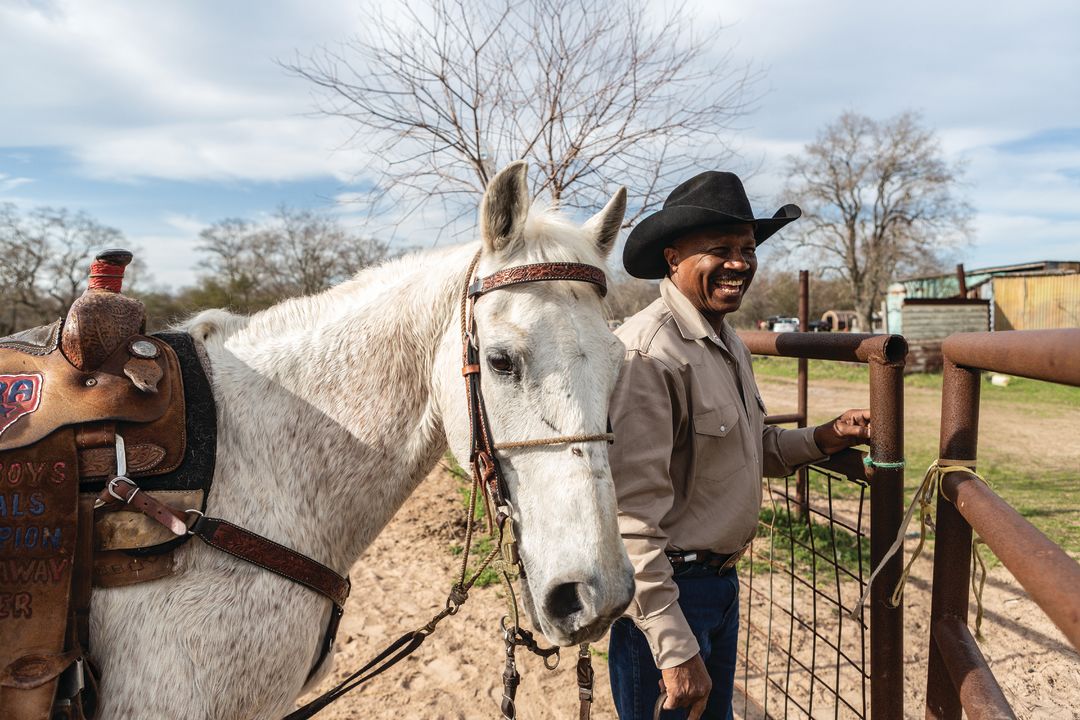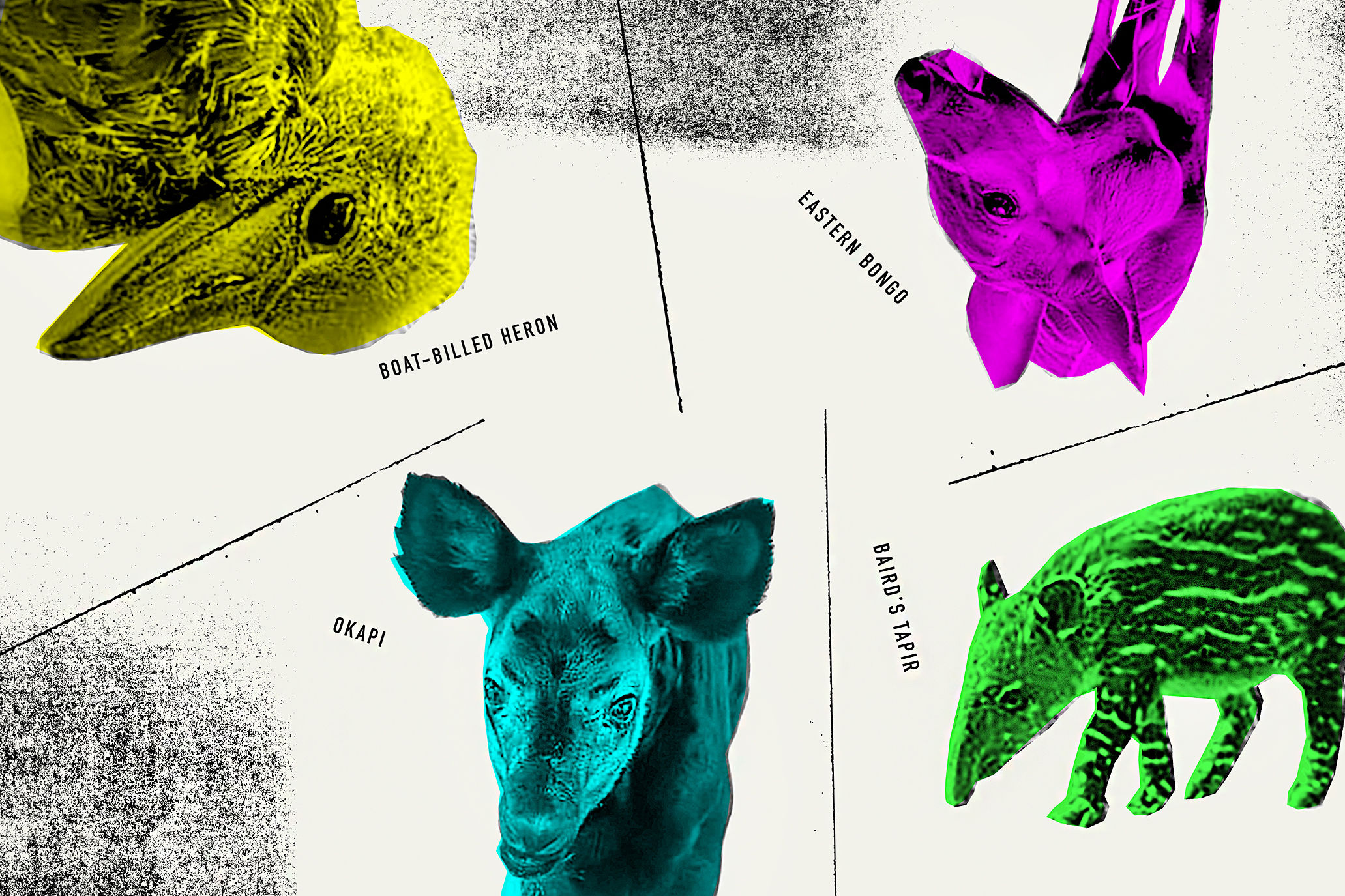Black Cowboys: The Unsung American Hero

Riders in Southside Houston take the streets on MLK Day.
Image: Yuliana Gonzalez
Boots. Standoffs. Titled hats and dust in the wind. The cowboy is one of America’s most famous cultural icons. Known for his skill and die-hard quest for expansion, the cowboy has been represented in pop culture as overwhelmingly white for centuries. But the truth is, just like many of the nation’s untold stories, cowboy culture and traditions have deep roots in the history of Black Texans.
As early as 1825, 25% of Texas’ settler population was enslaved. Herding cattle in what would become the Lone Star State relied heavily on the labor of its enslaved population, setting a trend that African American people would become the most skilled cowhands. Research by the Smithsonian Institution in 2017 found that due to the increased need for cattle herding post-Civil War, one in four cowboys was Black. The rise of the Black cowhand coincided with the burgeoning beef industry in Texas and, despite discrimination, Black people persisted as the nation’s earliest essential laborers.
The introduction of barbed wire fences in the late 1870s put an end to the open range and decreased the need for cowhands. This shift gave birth to the rodeo, where men and women competed to show off their skills and created a sport of their own.
For the past 90 years, the Houston Livestock Show and Rodeo (HLSR) has been a landmark event for both rodeo entertainment and the livestock industry. Hailed as the world’s largest livestock showcase, it welcomes thousands of exhibitors, competitors and millions of fans of all ages and geographies. In 1993, 50 Black Houstonians united to create the HLSR’s Black Heritage Committee to honor the contributions of Black Western pioneers and to serve the Houston community.
Organizations like the Black Professional Cowboys and Cowgirls Association in Crosby, Texas, and the Black Cowboy Museum in Rosenberg have also worked to educate Americans about the diversity within Western heritage. The museum’s founder, Larry Callies, was a cowboy raised in the 1960s in a segregated Southwest Houston and has traced the first cowboys back to present-day Fort Bend County.

The founder of Black Cowboy Museum in Rosenberg, Larry Callies was a cowboy raised in a segregated Southwest Houston and traced the first cowboys back to present-day Fort Bend County.
Image: Michael Starghill
“Growing up as a cowboy, it was really tough because Black people didn’t know about the history, and white people didn’t want us to know,” Callies tells Houstonia in a phone interview from Rosenberg. “Despite what was on TV, Black cowboys outnumbered white ones in Texas. Nobody truly knew these things until I opened this museum four years ago. If I didn’t do this, people wouldn’t know what happened.”
Callies’ work with the museum has become pivotal in completing the narrative and honoring figures like Texas-born William “Bill” Pickett — America’s first Black rodeo star who was inducted into the Rodeo Hall of Fame in 1972 and whose legacy is honored with the Bill Pickett Invitational Rodeo, the nation’s longest-running all-Black rodeo that tours cities like Denver, Los Angeles and Fort Worth.
Beyond the rodeo, parades and trail rides, the Western aesthetic has recently resurfaced in popular culture and Texas is the reason why. Musicians, such as Houston’s own Megan thee Stallion, Solange and Beyoncé, have paid tribute to Black Western culture through their visual and fashion choices.
“There’s been a huge shift in the past few years. Netflix came to my museum three years ago and made two movies using the information here. People are finally beginning to recognize the role of the Black cowboy in history,” Callies says.







